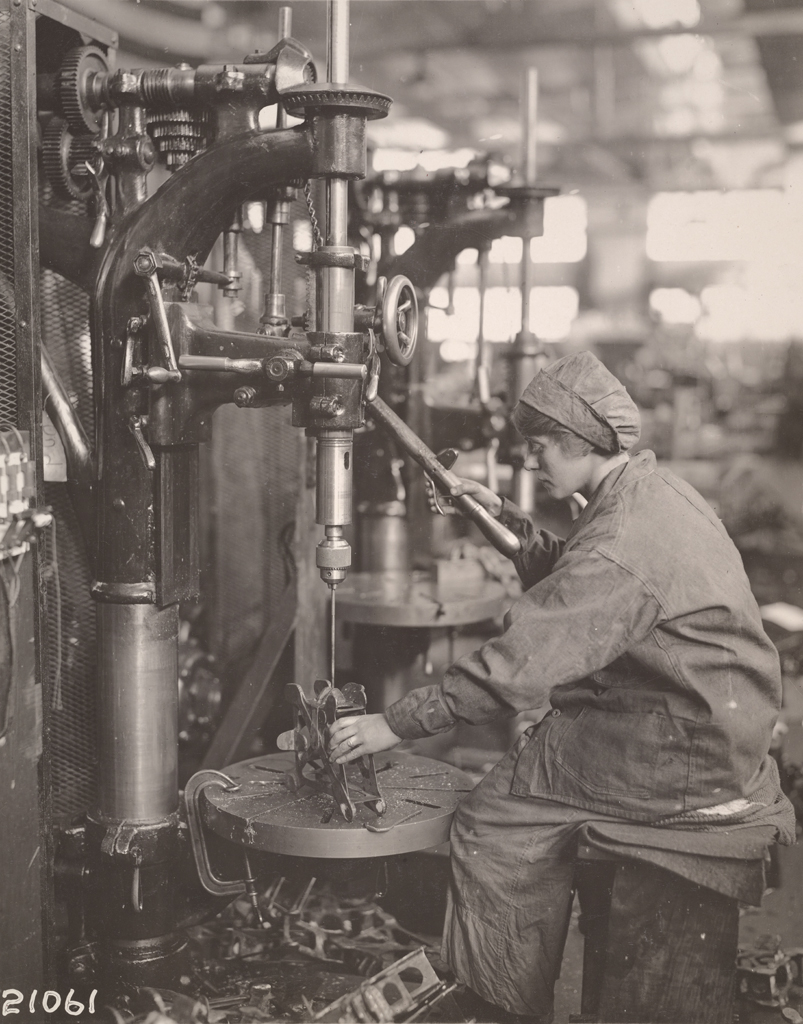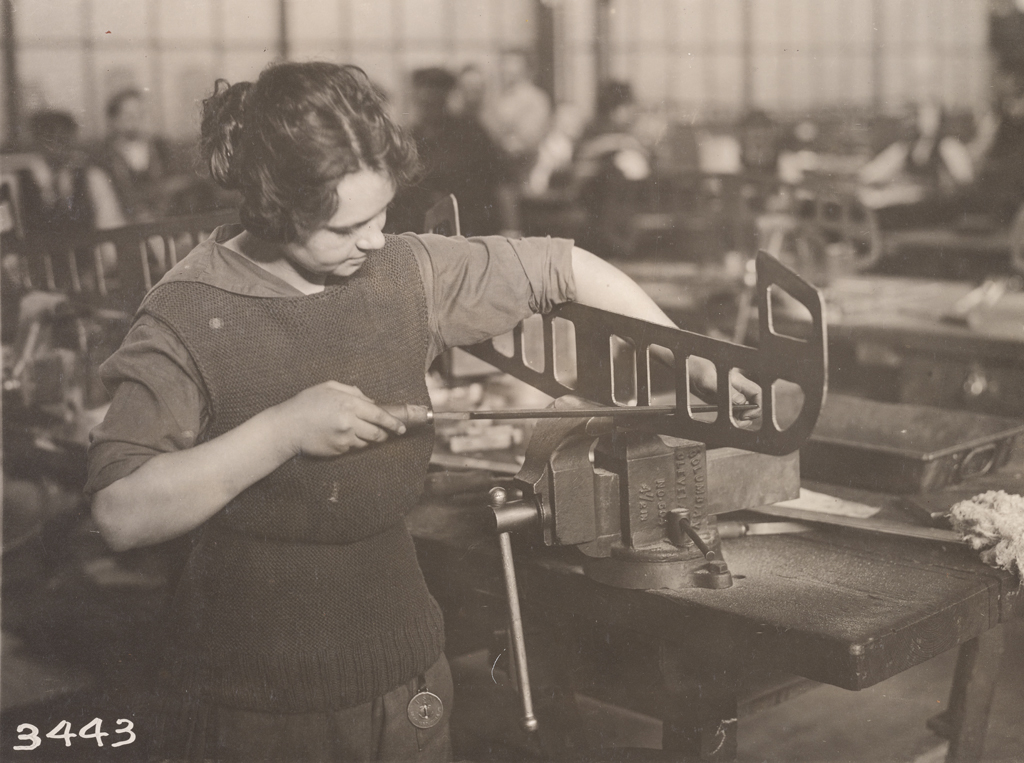
When the United States Navy’s Naval Aircraft Factory in Philadelphia needed to ramp up their labor force in early 1918, it began to train and employ women. According to William F. Trimble, author of Wings for the Navy: A History of the Naval Aircraft Factory, 1917-1956, the factory’s first female factory worker was Marion Elderton, already on staff as a secretary. That transition happened in December of 1917, and by June of 1918, the labor force included 218 women. One year later (Dec.1918), NAF female employment reached 890, which was 24.5% of the work force.
Yes-they were referred to as girls
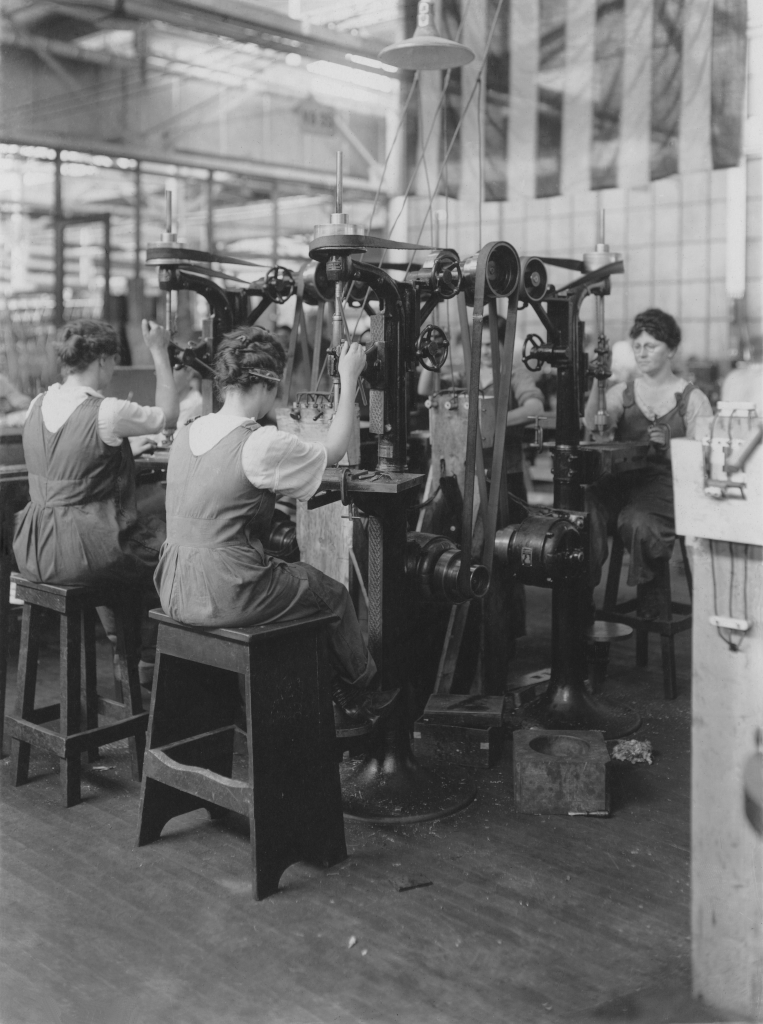
Not to put too fine a point on it, I suspect that the writer of the captions on these photographs was male, perhaps referencing the novelty of the subject. Trimble’s use of female and women is fitting for 1990, the time of his publication. Not so in 1918, when women were still fighting for the right to vote.
My mental picture when I see the word “girl” is a pre-teen. Luckily, that is not what the Navy’s caption writer meant. Check out the faces in these photographs and count how many of them fit “girl” in your mind’s eye.
But, I digress. We’re reflecting on the unprecedented opportunities women were given as part of the war effort. That these women were trusted with building aircraft is a testament to their value.
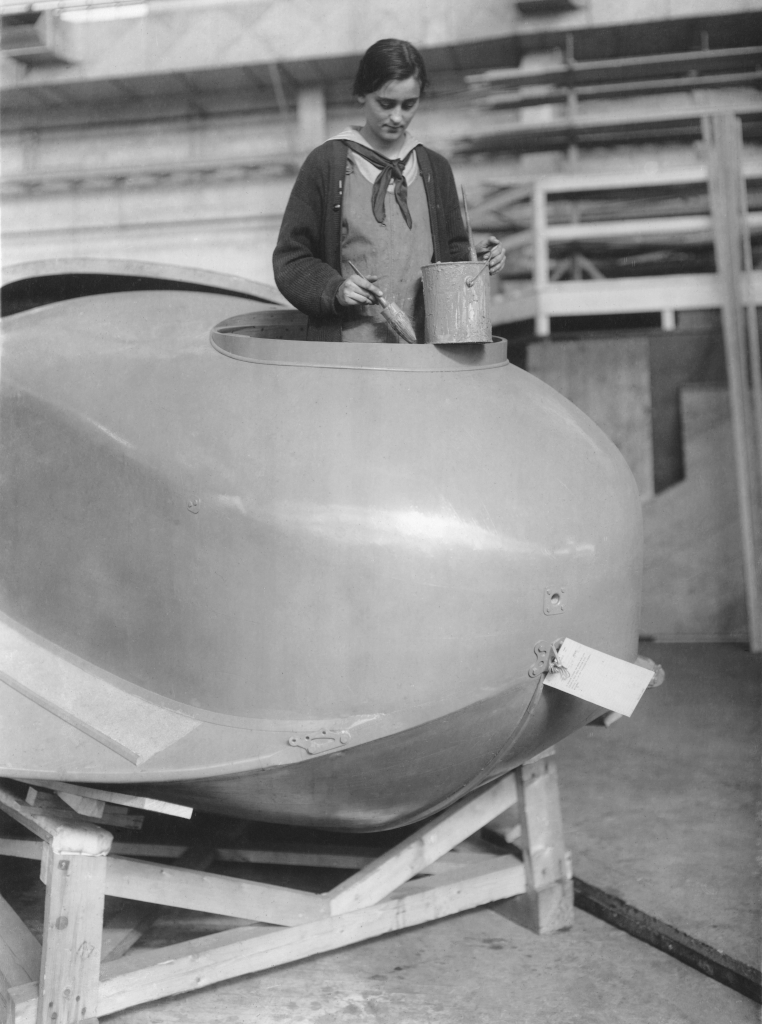
Here, a “girl” is in the process of painting a flying boat, the Curtiss Model F-5-L. The NAF’s assembly line approach increased efficiency dramatically.
Some things haven’t changed
Although many tasks were less demanding, skilled work performed at the NAF by women included drill press operation and machinist positions.
Women worked the same forty-nine hour workweek as men, but were paid less, based on the assumption that “their output had not equaled” that of their male counterparts (Trimble, pg. 32). The Navy attempted to compensate women in other ways, such as expanding restrooms and adding female nurses.
The bottom line: these female factory workers were trailblazers as well as patriots. By wedging themselves into this male-dominated field, they proved that women were capable of much more than had been expected of them in 1918.
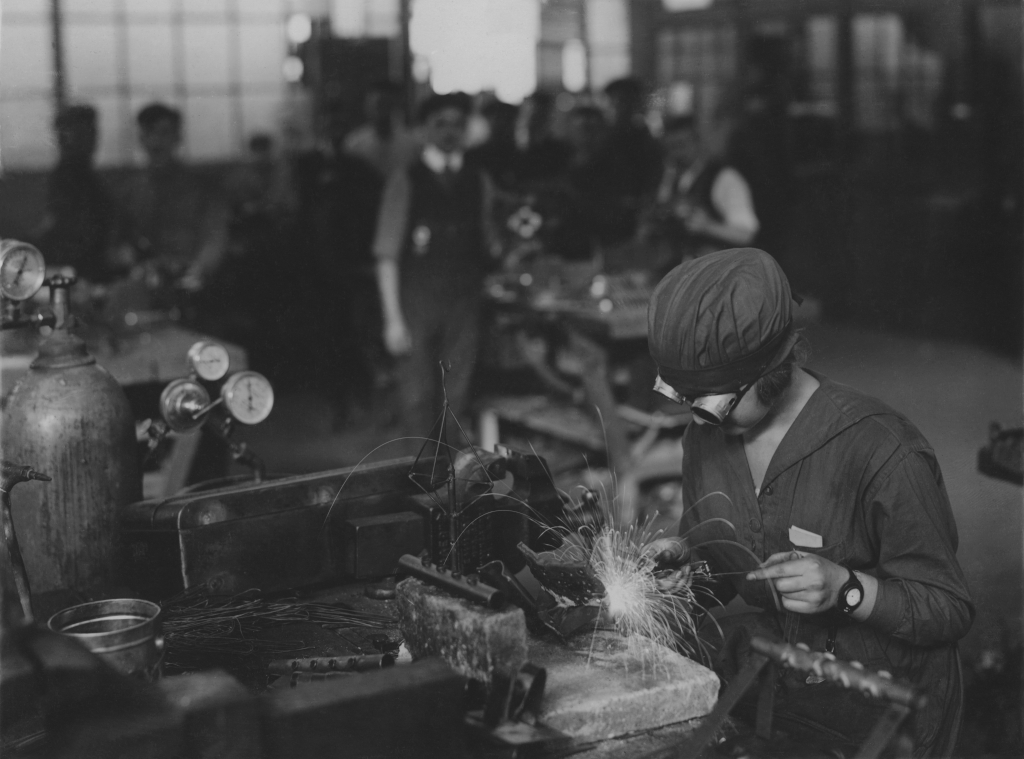
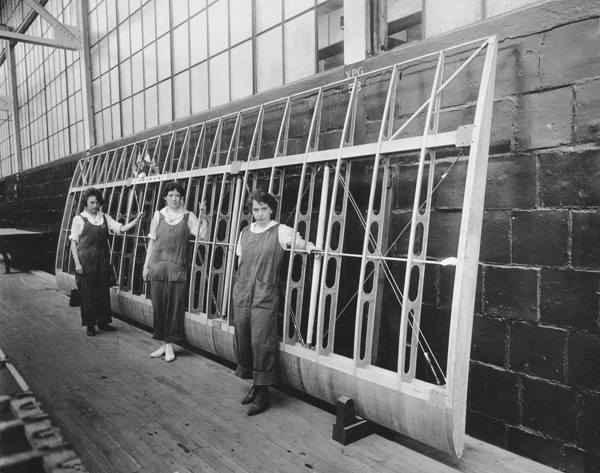
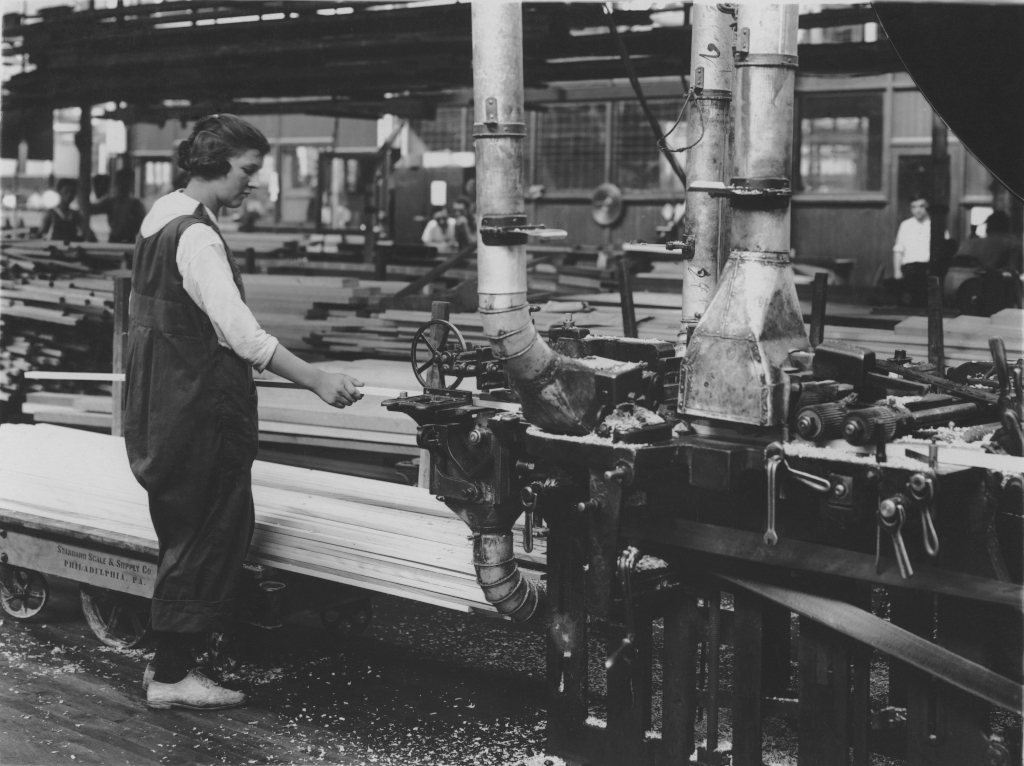
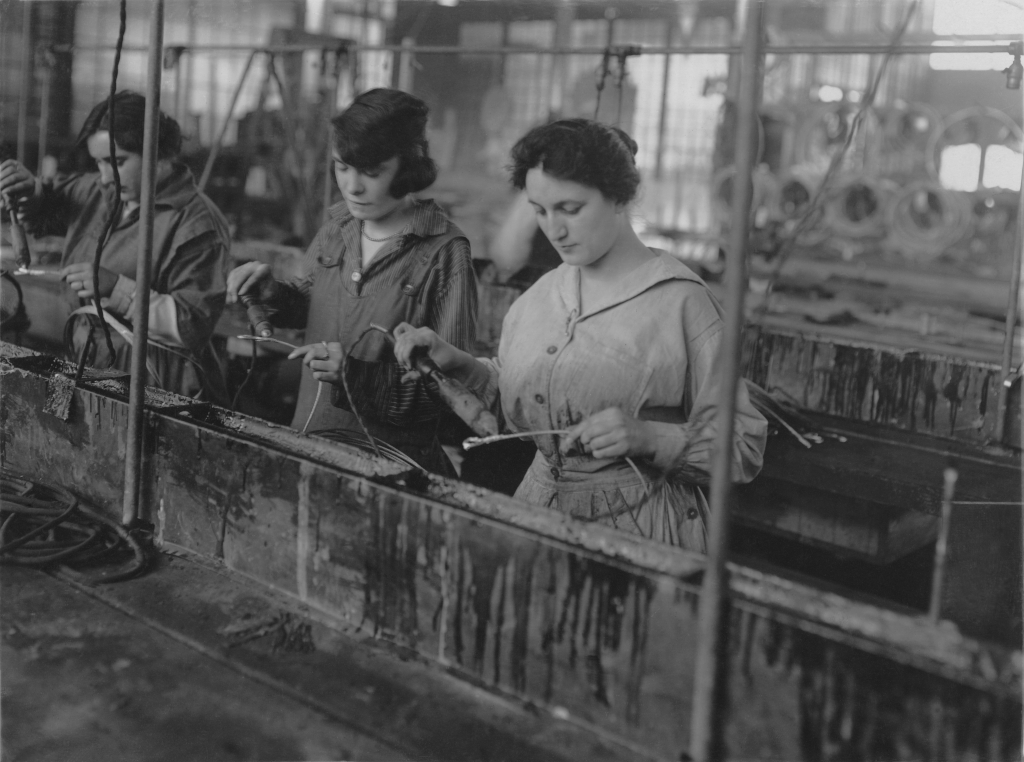
References
Trimble, W. F. (1990). Wings for the Navy: A History of the Naval Aircraft Factory, 1917-1956. Annapolis, MD: United States Naval Institute.
